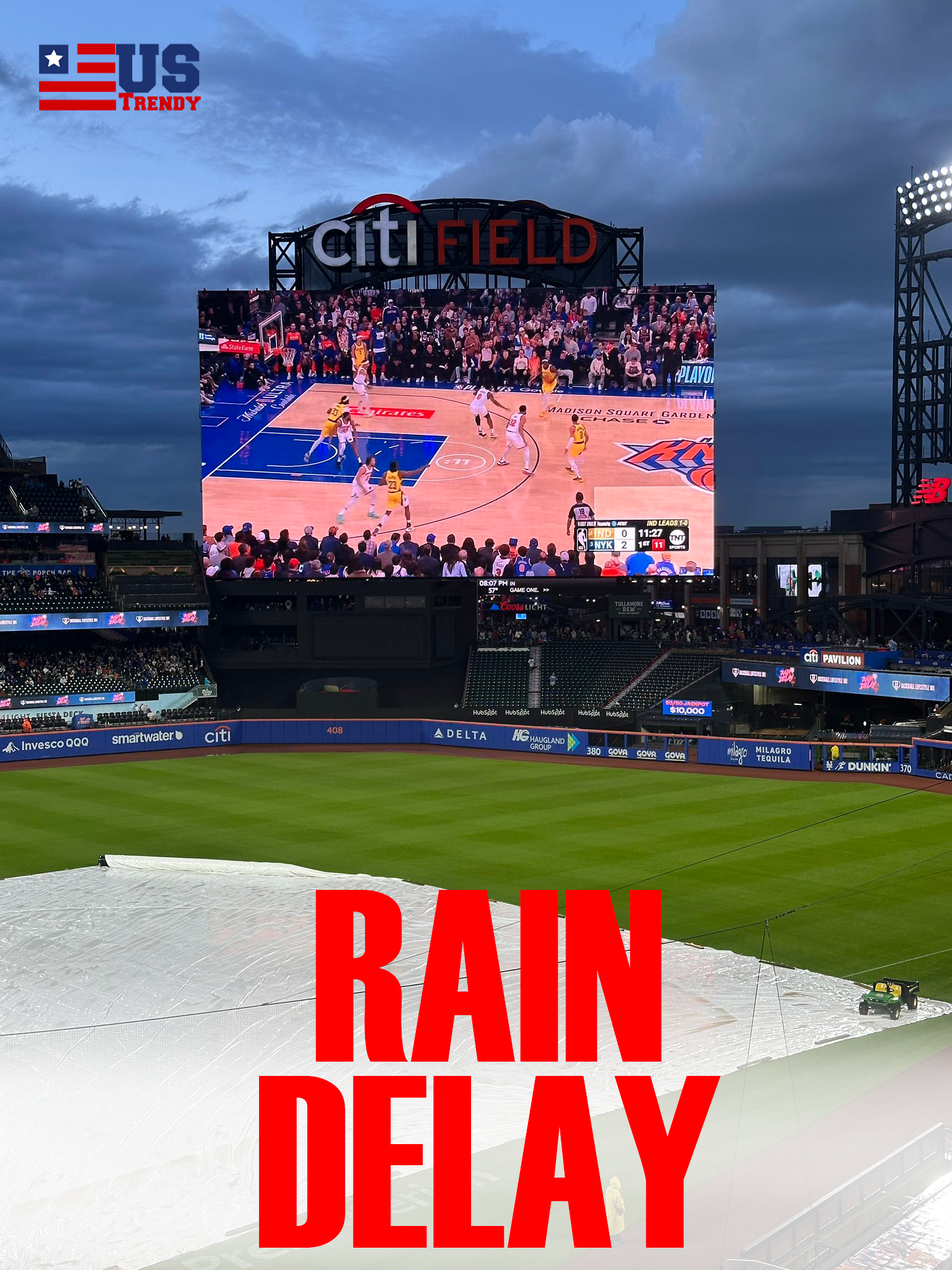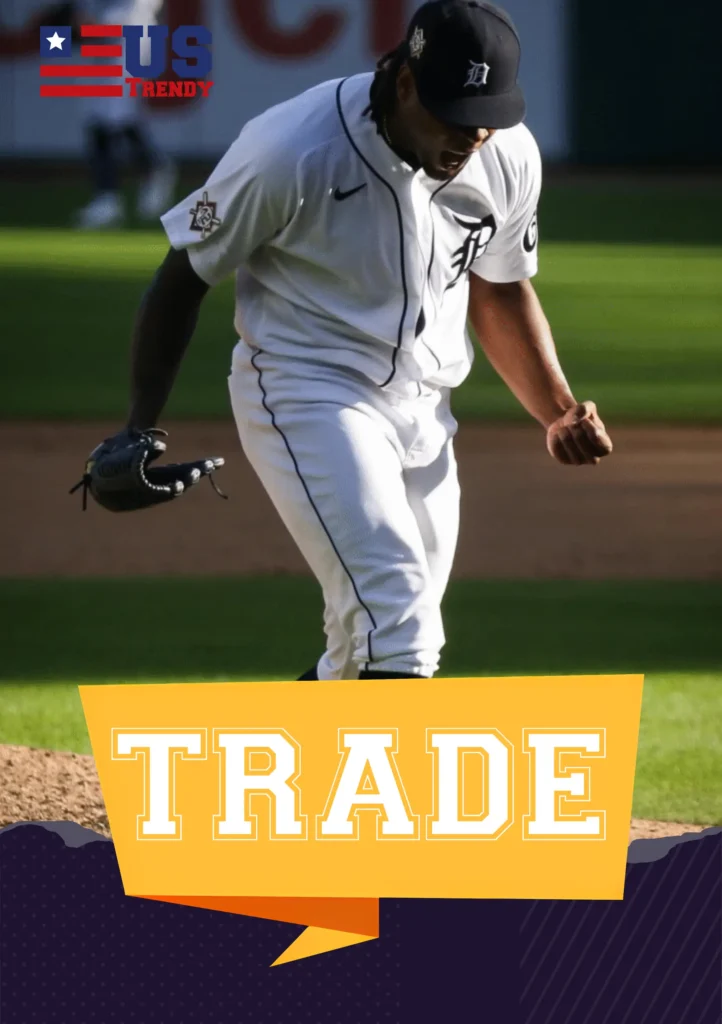Mets fans endured a rain delay, a shaky David Peterson start, Carlos Carrasco facing his former team, and a key prospect call-up as the club navigates inconsistent starts and lineup changes. Full recap, roster context, how to watch Mets games, and what to expect next.
Quick summary — the headlines you need
- Wednesday’s Mets–Braves matchup at Citi Field was delayed by weather before the first pitch; the start time was pushed back as teams waited on conditions.
- David Peterson started for the Mets and struggled in the fourth inning — issuing multiple walks and allowing a game-changing bases-clearing double that blew open a tight contest.
- The Braves countered with veteran Carlos Carrasco (now a Brave), who had an ugly short outing allowing multiple runs; the night featured big offensive swings and defensive lapses on both sides.
- The Mets are set to promote prospect Nolan McLean to the rotation in coming days to help stabilize short starts and lessen bullpen strain.
The rain delay: when & why the Mets game today was postponed
Weather interrupted the Mets–Braves matchup at Citi Field on Wednesday. Team and media reports confirmed the start was delayed due to impending storms, with broadcasters and local beat writers tracking radar before giving the go/no-go for the first pitch. Rain delays matter: they change bullpen plans, force lineup substitutions, and can turn a planned five-inning starter outing into a short, high-leverage appearance. The Mets and Braves both had to rework warmups and pitching schedules while the tarp stayed on the field.
Practical takeaways for fans: when a Mets game today lists a delay, check the team’s official account and local outlets (SNY, ESPN, and team social) for updated start times because television windows and streaming streams can shift quickly.
Game day: Peterson vs. Carrasco — matchup and what happened
Heading into the delayed start, the Mets handed the ball to David Peterson, who had been one of the rotation’s steadier arms (sub-3.00 ERA in recent reporting), while the Braves sent Carlos Carrasco, a veteran who’d reinvented himself as a serviceable innings eater following a long career elsewhere. The matchup carried narrative weight because Carrasco had once been a strong presence in the National League and now faced the Mets’ lineup as an opponent.
The game’s decisive sequence came in the fourth inning. Peterson breezed through the early frames but then issued multiple walks, leading to a bases-clearing double that turned the contest into a wild, momentum-flipping frame for Atlanta. Box scores and highlight write-ups show Peterson left with his line marred by that frame — 3.1 IP, 5 H, 6 R (6 ER), 5 BB, 5 K — a sign both of command issues and how one inning can swing a start’s narrative.
Carrasco’s night was short as well: he lasted just two innings, allowing six runs (three walks) before the Braves’ bullpen settled in. Those short outings — from both veteran and younger arms — are the prime reason the Mets are scrambling to find length in starts and protect the bullpen.
[Note: Images are collected from Instagram]
Why the rain delay and short outings amplify Mets’ problems
A rain delay doesn’t cause poor pitching, but it magnifies it. Here’s how:
- Bullpen planning is disrupted. Managers expect a five- or six-inning push from a starter and plan relievers accordingly. When delays compress the schedule or change the start clock, matchups look different and reliever availability becomes a chess match.
- Rhythm & command suffer. Starters like Peterson rely on routines; a late delay can cool arms and make it harder to find the strike zone — and a few walks turned into a bases-clearing double can quickly create a large deficit.
- Roster decisions accelerate. Short starts force front offices to look toward call-ups and internal options. That’s why the Mets are promoting Nolan McLean — the organization needs innings and strikeouts to reduce late-game pressure.
Rotation diagnosis: David Peterson, Carlos Carrasco & the wider staff
David Peterson
Peterson has delivered dependable starts in 2025, but persistent command issues cropped up in this game. He climbed to the mound with a solid personal ERA this season, yet underlying peripherals (walk rate, first-inning strikes) suggested vulnerability. The fourth inning’s four walks and the big double illustrated how quickly pressure manifests when control falters. If the Mets want Peterson to be a true mid-rotation stabilizer, improved first-pitch strike percentage and fewer free passes are non-negotiable.
Carlos Carrasco
Carrasco arrived in Atlanta to add veteran stability. This start, however, was rough — two innings, six runs allowed, and three walks — a line that underlines how even experienced veterans can struggle with command and pitch shape, especially when adapting to new catchers and parks. Carrasco’s role this season had been to eat innings; on this night he could not deliver the length the Braves hoped for.
The staff problem
The Mets’ rotation has shown uneven length in recent weeks, putting stress on the bullpen. Several serviceable starters have turned in short outings, while the back end of the rotation has not consistently delivered 5–6 innings. That creates a twofold problem: increased leverage for relievers and fewer matchups to protect late leads. That’s precisely why the club is calling up top prospect Nolan McLean — to inject strikeout ability and deepen options.
Prospect spotlight: Nolan McLean — the injection the Mets hope for
With Frankie Montas shifted to the bullpen and rotation inconsistency mounting, the Mets are promoting Nolan McLean, a Triple-A right-hander with a mid-90s fastball and a heavy sweeper/slider that generated swings and misses in the minors. McLean’s Triple-A line (sub-3.00 ERA, strong K/9) earned him top-40 prospect status and prompted the club to give him a major-league debut rather than a short audition. The Mets intend to give McLean a real look in the rotation to see if he can provide 5+ innings per start and help preserve the bullpen over the long September push.
What to expect from McLean: early starts will emphasize pitch count management and matchup control — the team will likely cap his first outings around 80–90 pitches and build up if results and recovery allow. If McLean can regularly produce strikeouts and induce weak contact, he becomes a long-term option or valuable trade chip at the deadline.
Offense & defense: how the Mets scored and where they faltered
Even in losses, the Mets’ offense can be a threat. In this game they produced hits and moments — and at other recent games they showcased a power core capable of big nights (see prior Alonso/Baty/Nimmo performances). But offense can’t always compensate for short starts. Specifics from the box score show:
- The Mets had multiple starters reach base and contributed multi-hit games in stretches, yet missed opportunities and sloppy defensive moments compounded pitching troubles.
When the offense produces early runs (as they did earlier in the series), the expectation is for starters to match that with innings and control. When they don’t, the bullpen wears down and late innings become high-variance. That’s the Mets’ immediate challenge.
How the rain delay affected broadcast viewers and where to watch Mets games
If you were tracking “mets game today” or trying to stream the matchup, here’s what to know:
- Local TV: SNY carries most Mets regional broadcasts; local stations and regional sports networks carry pregame and postgame content. The network issued delay updates and pushed adjusted start time information through social accounts.
- National coverage: ESPN/FS1/MLB Network will pick up nationally scheduled games; check your listings if a rain delay is announced because networks sometimes slide programming.
- Streaming: MLB.tv carries out-of-market feeds; in-market fans must use SNY or the Yankees/Mets in-market options. When rain delays happen, streaming schedules can be interrupted — keep the team’s official Twitter/X and app notifications on for the final start.
We have entered a rain delay. pic.twitter.com/c3YFVb9Icy
— New York Mets (@Mets) June 27, 2024
Standings & playoff implications — where a single loss fits in
A rain-delayed, bullpen-taxing loss is not a season-breaker by itself, but string a few together and the Mets’ postseason picture clouds. The franchise sits engaged in the wild-card fight and needs rotation innings to keep the bullpen fresh for September. Adding McLean aims to limit bullpen overload; getting Peterson back to consistent command is equally critical.
If the Mets can stabilize starts and keep the offense rolling, they remain situational favorites to make a late push. If they don’t, they may be forced into deadline desperation moves — trading prospects for arms or leaning on high-cost free-agents next offseason.
Tactical takeaways & managerial decisions
- Manager Carlos Mendoza (or current manager/acting manager depending on roster reports) is balancing the need to protect pitchers with the imperative to win now. That means shorter leashes for shaky starters and earlier reliance on matchups — a strategy that will only work if bullpen depth is healthy.
- Defensive alignment and run prevention must improve. One big inning can erase five successful frames. Defensive shifts, bullpen matchups and pitch-sequence adjustments will be crucial to reduce volatility.
- Player usage: Expect more starts by McLean and conserved usage of veterans until the rotation proves trustworthy on a string of starts.
What fans should watch next (short checklist)
- McLean’s first start — innings and strikeouts will determine whether the promotion is short-term or lasting.
- Peterson’s command — first-pitch strikes and walk rate in his next start.
- Bullpen innings — fewer than 15 reliever innings in back-to-back games is a stress marker.
- Weather forecasts — during summer, keep radar apps handy; rain delays change strategy and viewing windows significantly.





